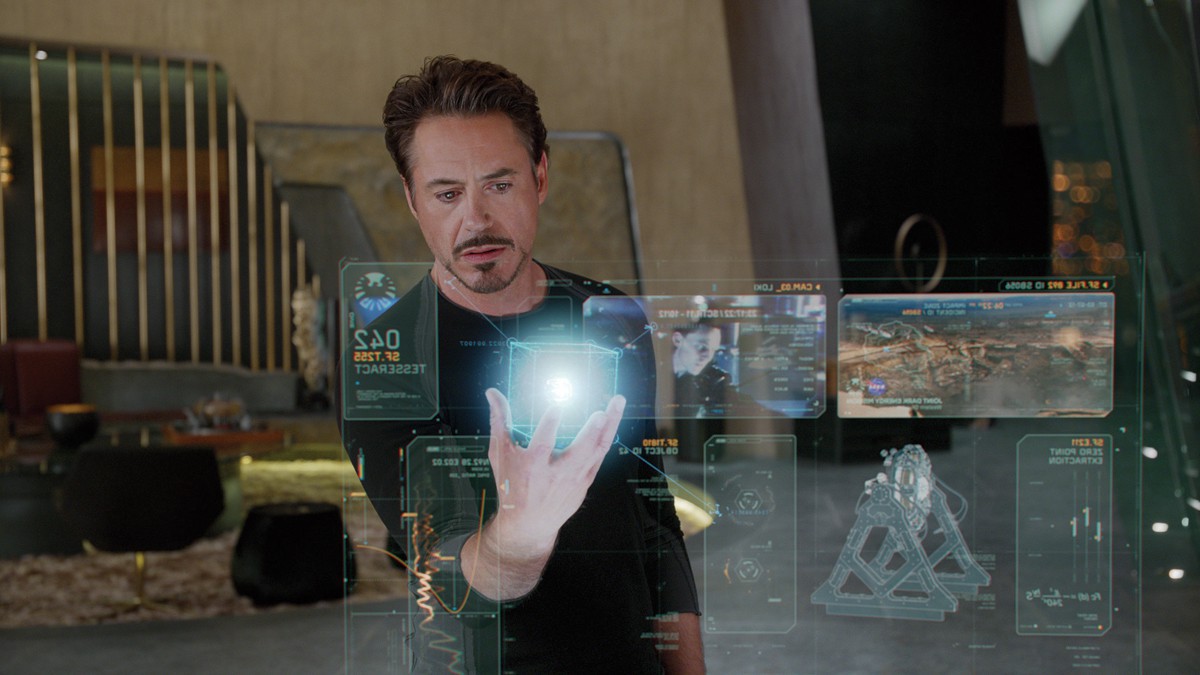Notes crazy. "Real 3D"

Foreword
Notes maddened - this is a series of articles that will talk about ideas, theories, intentions. Some of them will seem fiction, delirium, absurdity. I will say right away that they will not pretend to be recognized by the public or derive any benefit. These are just thoughts out loud. To take these notes seriously or not is your own business. What will these posts give me? Firstly, I learn something new from commentators. Secondly, perhaps I will give someone a boost for thought. Thirdly, look at the attitude of people towards what seems unimaginable.
Introduction
So. The topic of today's discussion will be the theory of projecting images in the air. Why is this topic? I would be interested in designing devices like Tony Stark does. I would be interested to watch a movie and walk inside it. Who cares, please, under the cat.
Theory
Now the market offers a sufficient number of prototypes and devices that are capable of creating three-dimensional images. Someone projects images on steam, someone on gas, someone ionizes the air at certain points. All of these systems are good. But you can’t mount them into the house. For a device that projects onto steam, a special hood is required above the steam generator. For those projecting onto gas, a vessel is needed. The use of indoor ionization was described in a previous article on image projection.
But what if you completely move away from the principles that are inherent in those devices? What if you learn to control a ray of light? Wouldn’t it be better?
What do I mean by “control the beam”? Create a glow at specific points in space. How to implement this? It is necessary to create a beam of a certain length with focus at the end point. You will be surprised. According to the Kerr effect, the refractive index of air in the middle of the beam will be greater than at the edges. Due to this optical inhomogeneity, the air medium formally behaves as a collecting lens with respect to laser radiation: the thickness of the beam decreases, and the light intensity increases. That is, the beam, as it were, focuses itself - self-focusing occurs. At first glance, it seems that the beam is capable of collapsing to zero thickness. However, when the light intensity reaches a certain value, multiphoton ionization occurs. Laser photons knock electrons out of air molecules (nitrogen and oxygen molecules). The released electrons form a plasma. Compared to air, a plasma has a lower refractive index; therefore, it formally behaves like a scattering lens and begins to defocus the beam, reducing its intensity. Having slipped through the plasma region, the beam continues its movement, and the situation repeats. The repetition rate of this effect depends on the frequency.

Figure 1. Self-focusing and defocusing processes allow the laser beam to travel tens and hundreds of meters without diverging. In this case, the beam mainly propagates in the medium through specially created threads (or filaments) - filaments.
It should be noted that in addition to high intensity, the laser pulse must also have a short duration of the order of a femtosecond (10-15 seconds). Otherwise, instead of multiphoton ionization of the medium through which it passes, cascade ionization may occur: the concentration of released electrons becomes such that they begin to ionize the molecules even far from the passing laser beam. This leads to an imbalance between self-focusing and defocusing. The beam ceases to be focused and quickly diverges.
It turns out that we only need to learn how to achieve a certain intensity, at which the beam thickness approaches close to zero, but does not knock out the electrons that form the plasma, as well as learn how to interrupt the filament in the right place. How to achieve this has not yet been presented. To achieve this, controlling the state of the particles forming the beam or in some other way can be determined only through experiments.
Maybe you have some ideas?
Technical implementation
Suppose that we have curbed laser radiation and we need to create a device. How to get a picture for projection and how to project it?
In the video above, a device is presented that scans the space. Each item in the end is a cloud of points, each of which has its own coordinates. Knowing these coordinates, we can calculate the necessary parameters by setting which the laser will display us the desired point. I was not too lazy and sketched the way I present this device.
Figure 2. Central device
Figure 3. Central device
Lasers are inserted into the holes of the sphere-shaped part, each of which is indicated by its coordinate and projects its point. As a result, we get an image consisting of dots. By increasing the number of lasers, we increase the resolution of the projection. It is clear that energy consumption will increase. But this will only spur laser manufacturers to develop technology in the direction of reducing energy consumption. In extreme cases, we will use nanotubes.
Watch from 16 minutes.
To avoid a situation when one of the beams is blocked by something, a system of 5 devices is needed (1 main and 4 additional). Place them according to this scheme:

Figure 4. Layout
Conclusion
And remember. We consider the laws of physics as something that cannot be changed. But what if this is not so? Only by learning to control the laws of physics can we create things that go beyond our comprehension.
Reminder. This article is the result of the conclusions of a person who may be mistaken.
